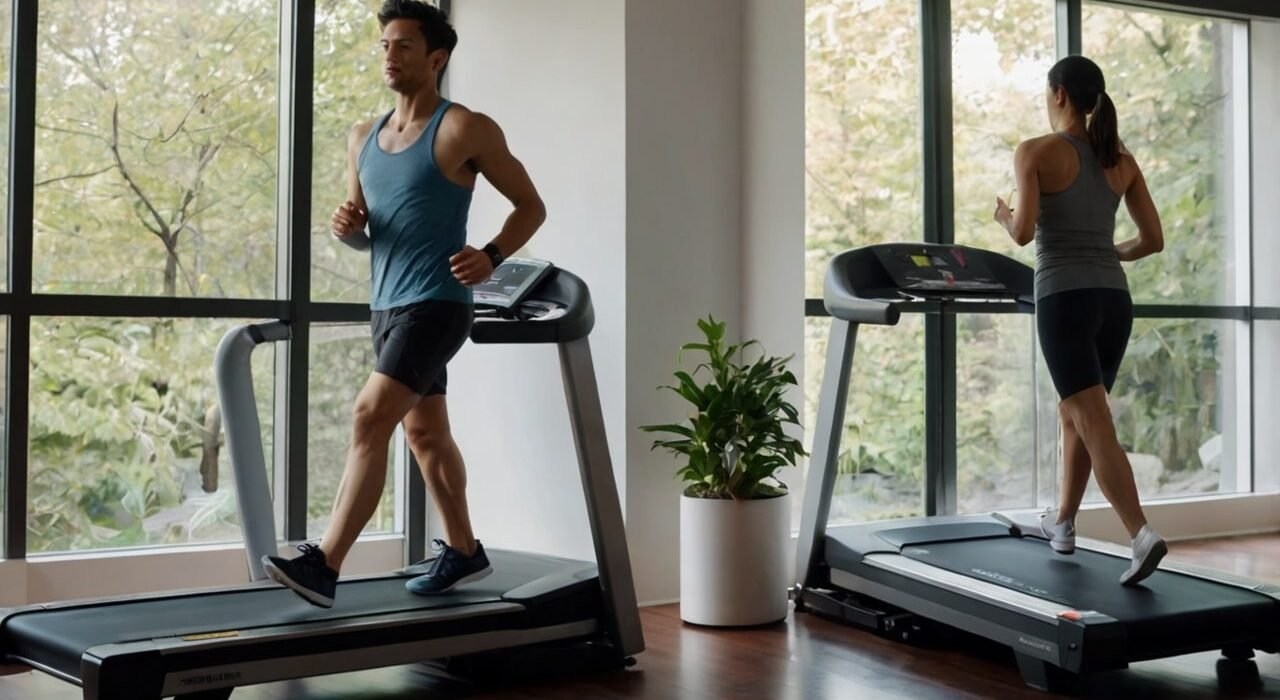When it comes to choosing a treadmill for your home gym, the decision often boils down to two main types: manual and automatic. Each type has its own unique features, advantages, and limitations. In this blog post, we’ll explore the differences between manual and automatic treadmills to help you decide which one suits your fitness needs and lifestyle.
What is a Manual Treadmill?
A manual treadmill is powered entirely by your movement. The belt only moves when you walk or run on it. Here are the key characteristics of a manual treadmill:
- Cost-Effective: Manual treadmills are generally more affordable than their automatic counterparts.
- Energy Efficient: Since they do not require electricity, they can be used anywhere without needing a power source.
- Compact and Lightweight: Manual treadmills are often smaller and easier to store, making them ideal for limited spaces.
- Challenging Workout: Because the belt is not motorized, you need to exert more effort, providing a more intense workout.
Pros of Manual Treadmills:
- Lower cost.
- No electricity is required.
- Provides a natural running or walking experience.
- Ideal for high-intensity workouts.
Cons of Manual Treadmills:
- Limited features (e.g., no preset programs or advanced metrics).
- Can be harder to use for beginners.
- Not suitable for prolonged or high-speed running.
- May lack stability and durability.
What is an Automatic Treadmill?
An automatic treadmill, also known as a motorized treadmill, is equipped with a motor that powers the belt. It comes with a variety of features to enhance your workout experience.
- Multiple Speed Options: You can adjust the speed and incline settings to vary your workout intensity.
- Advanced Features: Automatic treadmills often include pre-set workout programs, heart rate monitors, and digital displays for tracking your progress.
- Convenience: The motorized belt makes it easier to use, especially for beginners or those with joint issues.
Pros of Automatic Treadmills:
- Wide range of features for versatile workouts.
- Suitable for all fitness levels.
- Adjustable speed and incline settings.
- Sturdier and more durable.
Cons of Automatic Treadmills:
- Higher cost.
- Requires electricity.
- Larger and heavier, requiring more space.
- Maintenance can be more expensive.
Factors to Consider When Choosing a Treadmill:
Here are some factors to help you decide whether a manual or automatic treadmill is best for your home:
- Budget: If you’re on a tight budget, a manual treadmill is the more economical option. For those willing to invest in advanced features, an automatic treadmill is worth considering.
- Space: Manual treadmills are compact and easy to store, making them ideal for smaller spaces. Automatic treadmills, while bulkier, are better suited for dedicated home gyms.
- Fitness Goals: For high-intensity training, a manual treadmill is great. If you prefer versatility and convenience, go for an automatic treadmill.
- User Experience: Automatic treadmills are user-friendly and better suited for beginners or those with mobility issues.
- Maintenance: Manual treadmills have fewer components and require less maintenance, while automatic treadmills may need periodic servicing.
Which Treadmill is Right for You?
The choice between a manual and an automatic treadmill ultimately depends on your personal preferences and needs. If you’re looking for a budget-friendly, space-saving option and are ready for a challenging workout, a manual treadmill is a solid choice. However, if you value convenience, advanced features, and versatility, an automatic treadmill is the better investment.
Conclusion:
Both manual and automatic treadmills have their own set of advantages and disadvantages. By evaluating your budget, fitness goals, available space, and workout preferences, you can choose the treadmill that best fits your lifestyle. Whether you’re a beginner or an experienced fitness enthusiast, the right treadmill can help you stay active and achieve your health goals from the comfort of your home.


